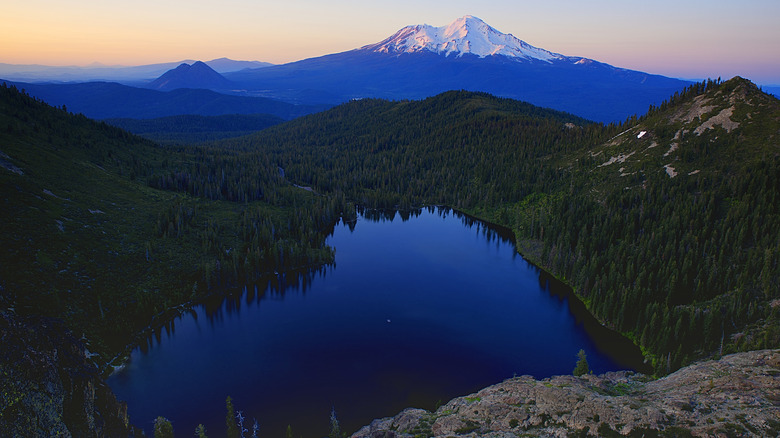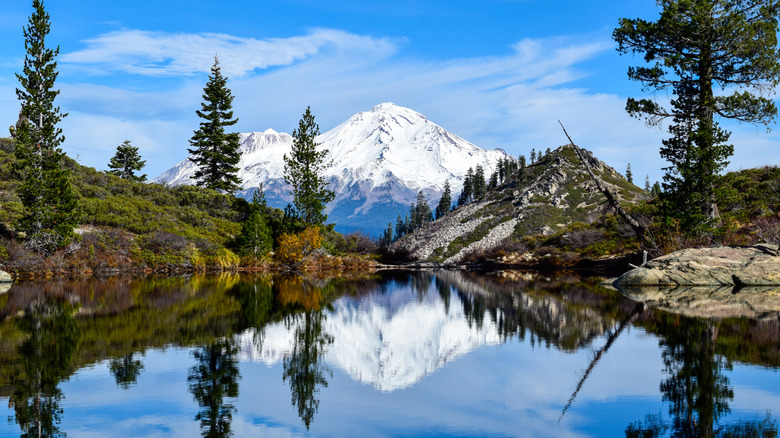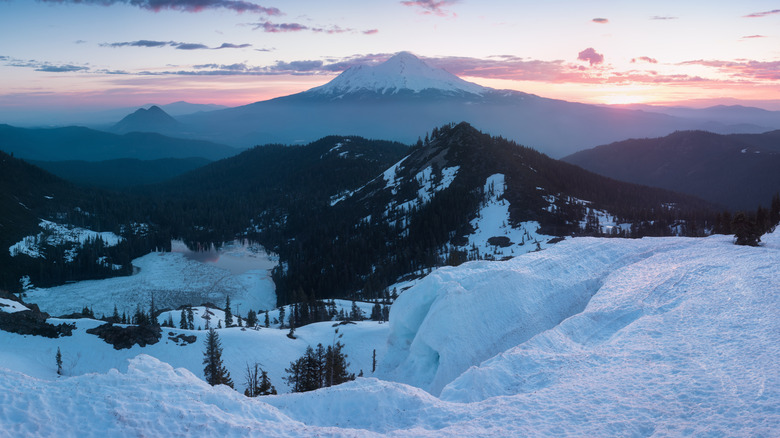A Perfect Heart-Shaped California Lake Offers Crystal-Clear Waters And Epic Views Of Mount Shasta
At the southern end of the Cascade Range, Mount Shasta provides some of the most scenic imagery in Northern California. This permanently snow-kissed volcanic peak can be viewed from miles away, with one of the finest photo ops accessible only by foot, from the aptly named Heart Lake, high up on the Trinity Divide side of the Shasta-Trinity National Forest.
This heart-shaped glacial reservoir is relatively small at just under an acre (and only 11 feet deep on average), but it offers a perfect reflection of Mount Shasta on a clear day, whether viewed from the southern shore or the slabs of Castle Peak, directly above it. Thanks to its elevation, many hikers argue Heart Lake's views outshine those of other alpine lakes in the area, including the much larger (and more popular) Castle Lake below it. Consider camping out for the night, and you'll be rewarded with a particularly memorable sunrise or sunset.
How to get to Heart Lake and where to stay
Located within majestic but underrated Castle Crags State Park, the Heart Lake Trail is short but steep, covering 2 miles out and back, with an elevation gain of 721 feet. Castle Peak is another half-mile and over 400 feet of elevation gain beyond that. The trail starts at Castle Lake Campground, just 1.5 hours from Redding Regional Airport along Highway 5, and 3.5 hours from Sacramento. (Or if you'd like to take the scenic route, the Volcanic Legacy Scenic Byway traverses several breathtaking vistas just some 50 miles to the east.)
Mount Shasta is considered one of the most budget-friendly destinations to vacation in California, thanks to affordable lodging options and campsites. The Castle Lake Campground and backcountry at Heart Lake have no fees and require no reservation. Less intrepid visitors should look for lodging in Mount Shasta City or the frontier railroad town of Dunsmuir, where you can even sleep in a repurposed vintage caboose. You'll find a supermarket, a number of local eateries, and novelty boutiques in each, as well as outdoor and adventure gear vendors in the former.
When to go and what to bring
Conditions for trekking anywhere in Castle Crags are best from May to October. Outside this window, muddy conditions can make the going difficult. But in winter, the way remains open for experienced snowshoers since the parks plow the road to Castle Lake. Glacial Heart Lake even freezes over, making it possible to walk across.
Thanks to its shallow depth, the water here is warmer than most alpine lakes and is especially pleasant in summer. Be sure to bring a bathing suit, a towel, and sun protection if you intend to take a dip. Also, while visibility is clear in the center, it can be murky at the edge, so water shoes are recommended.
Since the trail to Heart Lake is steep, be sure to wear grippy shoes no matter the season. Elevation is upwards of 6,000 feet, so bring extra layers for cooler temperatures. The hike takes, on average, no more than two hours round-trip, but it's a good idea to pack water, food, and a plastic bag or other receptacle to carry your trash. Lastly, and this should go without saying, but — bring a camera!


